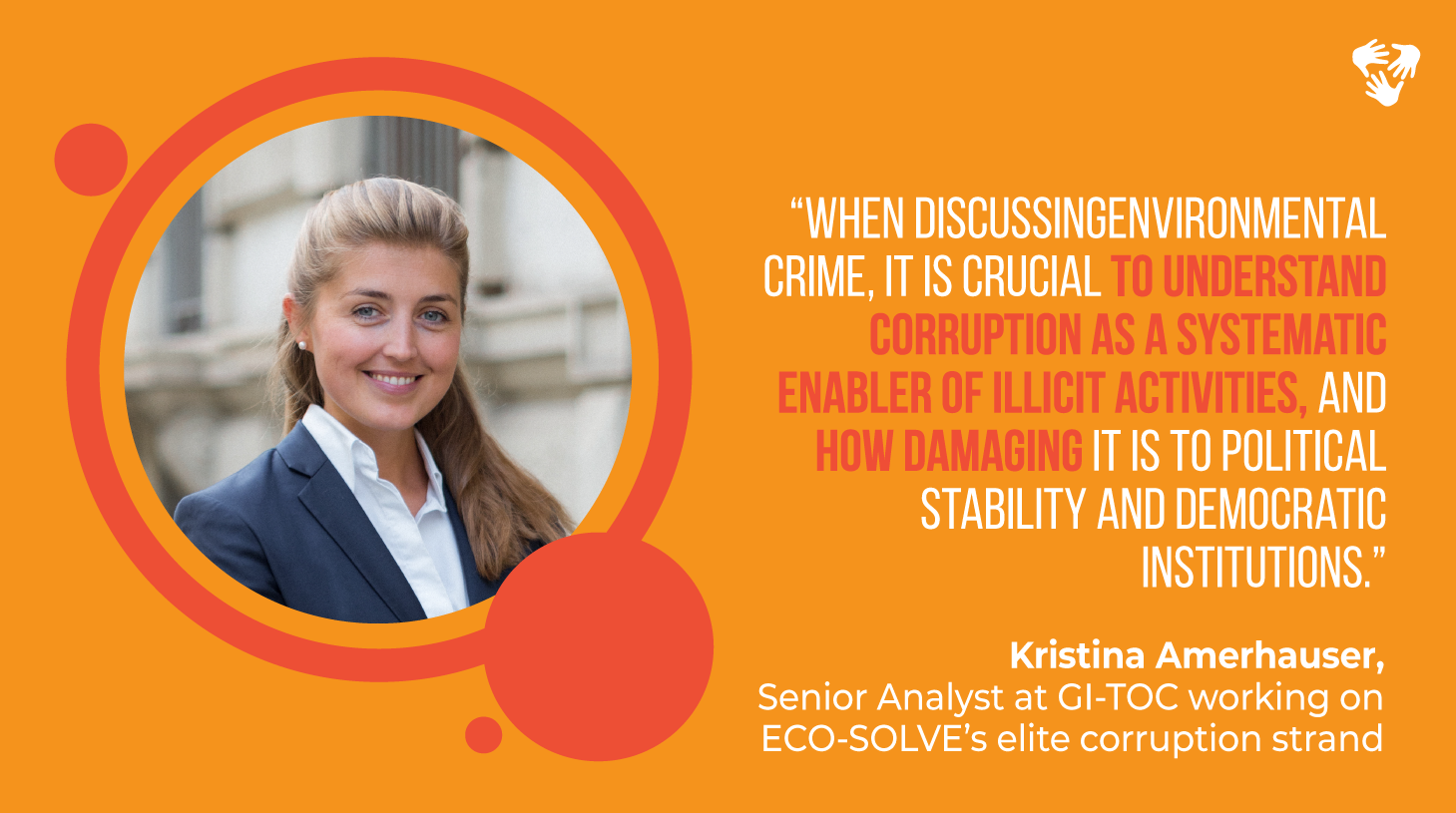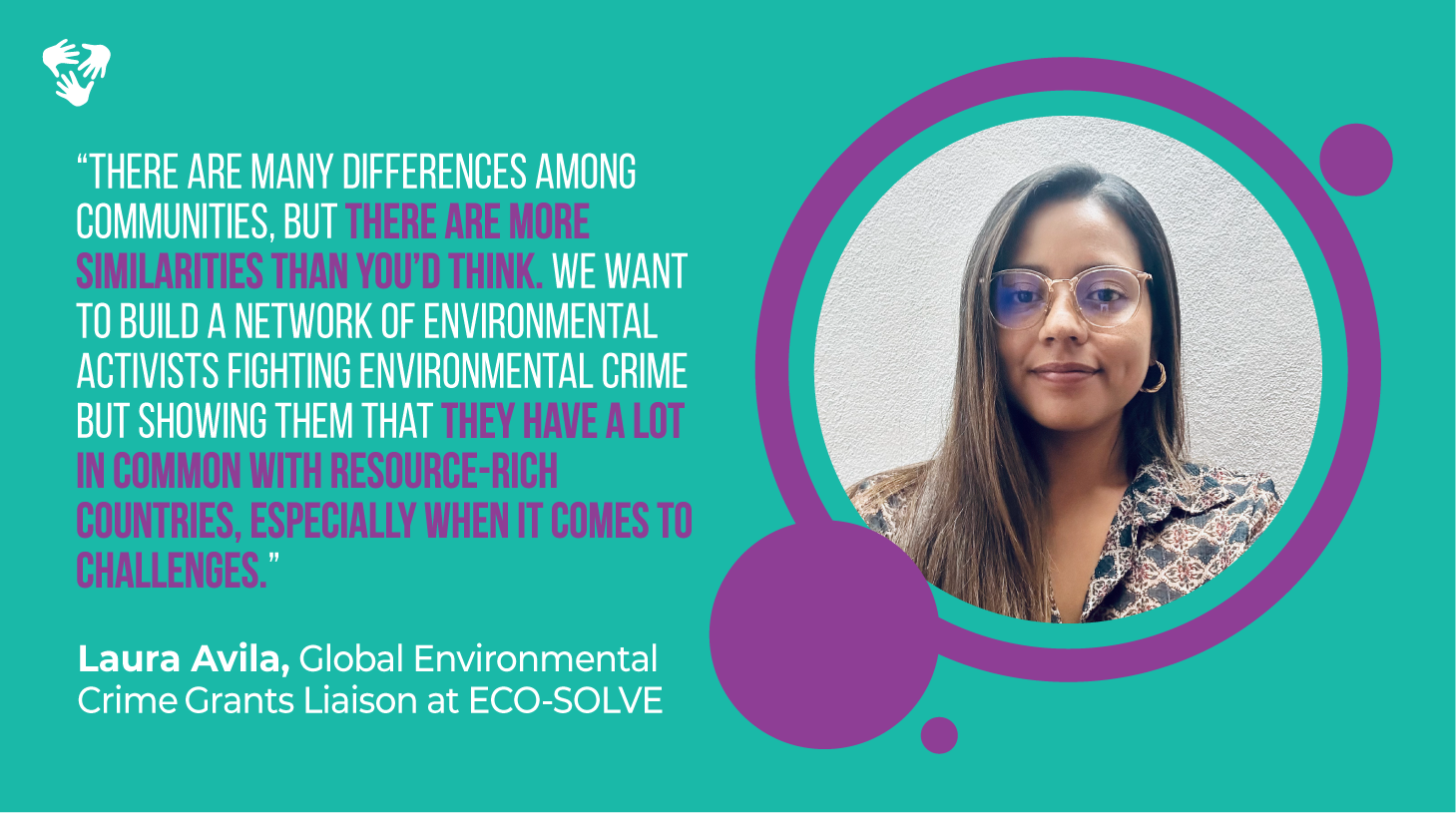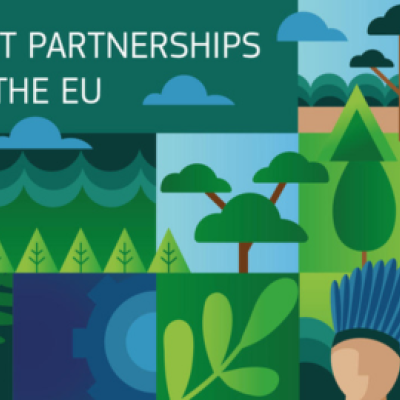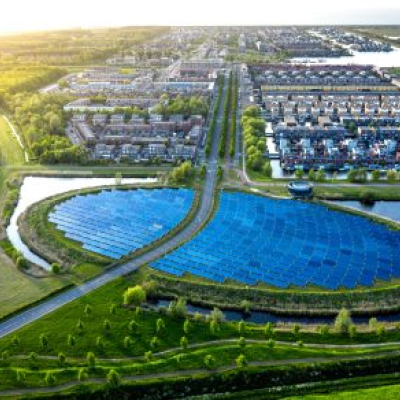Reducing the human footprint and, overall, our environmental impact is a multifaceted business. While scientists have started seriously warning us about the dangers of climate change since at least the 50s, we would have to wait until the 1980s to witness the first forms of united action to raise awareness of the worrisome rise of our planet’s temperature.1 Even more disquietingly, it is only in the last 15 years that the international community has made significant efforts to categorise “illicit activity that harms the environment” as serious criminal activity.2
There’s yet to be a widely accepted definition of what constitutes a crime against the environment. Surely, we are witnessing unprecedented scrutiny of activities that are de facto illegal and that have a significant impact on the environment. Activities like illegal logging, flora and fauna trafficking, industrial pollution and illicit waste dumping, to name a few, directly contribute to the destruction of entire ecosystems with long-term effects on our health and that of our environment. Often due to their cross-border nature and the lack of widespread local and global effective legislation, among other factors, these crimes go unpunished.
At EU level, the past two decades have seen a ramp-up in efforts to better understand “the drivers behind [environmental crime] and how to tackle them, [to] keep pace with the criminal landscape by focussing on both the supply and demand side of the illicit economy.”3 In November 2022, the European Commission published the (revised) EU Action Plan Against Wildlife Trafficking. Differently from its 2016 precursor, this version increasingly focusses on strengthening law enforcement capacities via capacity-building for police, judges, and prosecutors, as well as through training and data-sharing.
Additionally, in April this year, the European Commission adopted the new Environmental Crime Directive, which entered into force on May 20th and which “establishes minimum rules with regards to the definition of criminal offences and penalties in order to protect the environment more effectively, as well as measures to prevent and combat environmental crime.”
These are significant steps towards the urgent need to regulate such a complex issue, given the impact of environmental crime on the future of our planet.
Disrupting illicit environmental flows for the sake of our future
In August 2023, the Service for Foreign Policy Instruments (FPI) and the Global Initiative Against Transnational Organized Crime (GI-TOC) launched an EU-funded project, ECO-SOLVE, “designed to monitor the illicit online environmental trade, extract useful and digestible data that can inform law enforcement and private sector actions, while driving greater transparency and accountability in tackling illicit online markets.”4 The programme, set to run at least until the end of August 2026, has three main pillars compounded by a fourth, cross-sectional one:
-
Activity 01 - Data for disruption. Due to the internet's growing prominent role in illicit trade, ECO-SOLVE will create and implement an Artificial Intelligence (AI)-powered Global Monitoring System to track online illicit wildlife markets and serve as a global database for local law enforcement agencies and policymakers.
-
Activity 02 - Elite Protection Exposure. Unfortunately, widespread corruption in certain regions of the world has fuelled high levels of illicit trafficking. By conducting public exposure-oriented research, the project is set to uncover elite-level corruption linked to environmental crime and identify gaps in enforcement and legislation.
-
Activity 03 - Community Engagement. A key aspect of ECO-SOLVE is supporting local communities as game-changers in exposing and disrupting illicit activities. The project offers them a platform to share and incorporate their valuable insights into counter-crime strategies.
-
Activity 04 - A strategic grant facility. Its objective is to strengthen the impact of the streams of work described above by investing in community-run initiatives.
All in all, “the project monitors the online trade in illegal wildlife, extracting data to inform enforcement and regulation, while driving greater cooperation in the response through […] DNA and AI technology. It investigates and exposes the corrupt actors who facilitate illicit timber flows. It includes community perspectives in local policing strategies, to ensure the voices of communities […] are heard in multilateral fora.”5
|
Tips from the ECO-SOLVE team |
1. Collaborate across sectors and foster operational exchange of insights at both the institutional and local levels
“One of the biggest challenges in this field,” suggests Simone Haysom, Director of Environmental Crime at GI-TOC leading the ECO-SOLVE programme, “is working across sectors with entities which have different mandates and competing priorities.” Sometimes, all it takes is being open to collaborate and coordinate with others, constructively exchanging and discussing already existing approaches while creating something impactful yet innovative.
This is valid not only at the institutional level but also locally. “I see the huge benefit of consulting with many different types of people who are involved in the response, like law enforcement, data scientists, and researchers of wildlife forensics,” explains Simone Haysom. All these actors can provide insightful perspectives not only about the activities and the impact that is relevant to them but also on what has previously worked well, what has not, and where potential solutions to challenges could lie. The question is, then, how can all of these be transformed into impactful responses, which is at the core of ECO-SOLVE.
Holding consultations in each of the project’s priority areas, for example, allowed the implementing team to really understand how corruption and elite protection work in practice and locally; what limitations and opportunities exist for exposure reporting; how to best communicate investigations’ results so that the information can lead to the creation of impactful action at government level, and much more. Having access to this kind of granular information helped the ECO-SOLVE team in setting up the project very well, early on.
2. Avoid tunnel vision when it comes to finding impactful and long-term solutions
Comprehensive solutions often require coming at the problem from different angles.
For example, in the case of environmental crime, law enforcement-related approaches are just part of the equation. “When talking about organised crime, your response needs to be both development-oriented and law enforcement-oriented,” explains Kristina Amerhauser, Senior Analyst at GI-TOC, working on ECO-SOLVE’s elite protection exposure strand.

In some situations, economic pressures mean many people in a specific community are involved in illicit activities in one way or another. While you cannot arrest everyone, you can try to create economic opportunities, provide education, and explain the nature of illegal activities and how they directly impact the community. In some cases, communities themselves have insightful perspectives on what is happening on the ground and how local law enforcement can support them.
“We are trying to connect different approaches for gathering evidence and translating them into impact,” continues Kristina Amerhauser. The corruption output focusses on gathering information and data on elite protection and corruption, on who are the businesses conducting illegal activities and the political elites turning a blind eye. This way, information can be shared with law enforcement and financial institutions to trigger action. “At the same time, it is very much about building a network of people at the community and civil society levels that can explain what is going on and share insights so that we can really make a difference,” she concludes.
3. Don’t forget that communities are not just recipients of support: they deserve a seat at the table
Effective and impactful community engagement revolves around trust. And trust is built by consistently involving those we create projects and programmes for. Laura Avila, Global Environmental Crime Grants Liaison working on ECO-SOLVE’s third stream, highlights how, among other things, the team is striving to build long-lasting relationships with community leaders, environmental activists and ultimately people on the ground.

“In the preliminary stages of community engagement, we let people guide the discussion,” she explains. “Where is criminal activity happening, what are the main crimes committed and what are the risks… What is the relationship the community has with the natural resources in question... With the methodological stages that follow, we try to progressively deepen our understanding, and ultimately provide grants to enable community initiatives that tackle crime. Other organisations come to conduct interviews, and then leave. Environmental leaders are tired of that because they feel instrumentalised.” Keeping an open dialogue with the locals while supporting initiatives that build resilience, and implementing tailor-made methodologies are absolutely crucial.
Building trustworthy relationships is, however, not enough, continues Laura Avila. What’s missing when it comes to community engagement is access to international fora where voices are heard and can drive real, impactful action. “We have to be very vocal about recognising people not just as beneficiaries but to see them as active parts of the solution. Our role is to support them and offer them a seat at the table where they belong.”
Last but not least, we should remember to bring care into the work. “If you care about what you are doing, you’ll actually be able to be caring but careful when you design methodologies. We are working with humans, and these humans face challenges, they have emotions. We may not be able to immediately change their reality,” Laura Avila explains, “but we will bring support somehow. And local support will eventually have a global impact. Never underestimate that.”
Concluding thoughts
Addressing environmental degradation will require cross-sectoral solutions that consider a myriad of different issues. International cooperation, information-sharing, turning beneficiaries into active participants, and publicly exposing corrupt elites who turn a blind eye to environmental crimes are just a few of the crucial ingredients needed to secure a healthy planet for future generations.
More needs to be done at the (global) legislative level but as we continue to innovate and adapt strategies, let’s also recognise that we have solid opportunities and tools to bring about real change.
Like, comment and share this article with your peers, and watch the video below!
* The UN Data reference in the article opening can be found here.
1 It should be noted, however, that as Spencer R. Weart explains in his 2008 book The Discovery of Global Warming, ancient Greeks already had an understanding that the activity of humans had an impact on local climate. An extract of Weart’s publication can be read here.
2 https://globalinitiative.net/analysis/responses-environmental-crime/.
3 Ibid.
4 https://globalinitiative.net/initiatives/ecosolve/. It is also worth mentioning that ECO-SOLVE is part of the European Commission’s Global Illicit Flows programme (GIFP).






Log in with your EU Login account to post or comment on the platform.